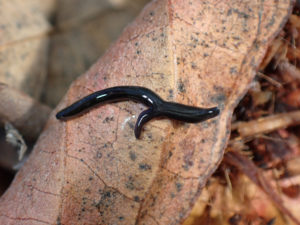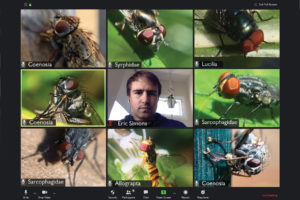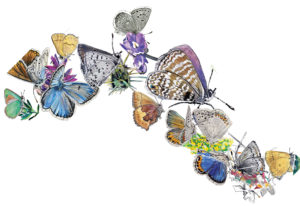In a game of 20 Questions, soil could be animal, vegetable, and mineral. It is populated by multitudes of very small organisms, it holds the bodies of plants both dead and alive, and it contains remnants of the mother rock from which it originated. According to the textbooks, soil is minerals, organic matter, air, and water. According to the poets, it is the living edge where earth and sky meet.
Though it may be a more subtle feature of the land than the hills and valleys that surround San Francisco Bay, soil plays no less a role in defining the natural world around us. Soil is an essential, living element of the landscape and is the foundation for the health of entire ecosystems. Getting to know the soil is essential if we want to create habitats for wildlife at home or understand the processes that shape a landscape and allow wild species to flourish.
Our contemporary understanding of soil began around the close of the 19th century, when two scientists working independently in Russia and America took the first close look at it. They concluded that there are many different kinds of soils with distinct characteristics and discernible patterns of distribution. Our appreciation of soil has continued to gain breadth and depth ever since. The study of soil has become a separate science, and its practitioners have identified distinct orders of soils—there are 12 in the world—as well as suborders, great groups, families, and series. Nineteen thousand soil series have been described in the United States; there are at least 140 in the Bay Area.
Upon this diversity of native soils has grown almost as great a number of human uses for them. And with uses come impacts; your garden-variety soil may be considerably altered from the original material that once occurred where your home now stands. The quality of your soil depends upon the history of land use locally and the extent to which the soil has been manipulated by developers and homeowners. As with the protection of air and water, the individual actions that each of us takes—how we dig in the soil, what we put on or into it—can influence the quality and integrity of the life-giving soil.
As the concept of seeing our yards as habitat and haven for native wildlife has taken root, Bay Area gardeners have shown greater interest in growing native and climate-appropriate plants. But the choice to “go native” involves more than the plants we grow; it extends to the soil that nurtures those plants and a great variety of wildlife. Bay Nature invites you to explore this ground beneath our feet, to see it as a rich and complex habitat in its own right, and to understand the potential we have for degrading and nurturing it.

.jpg)



